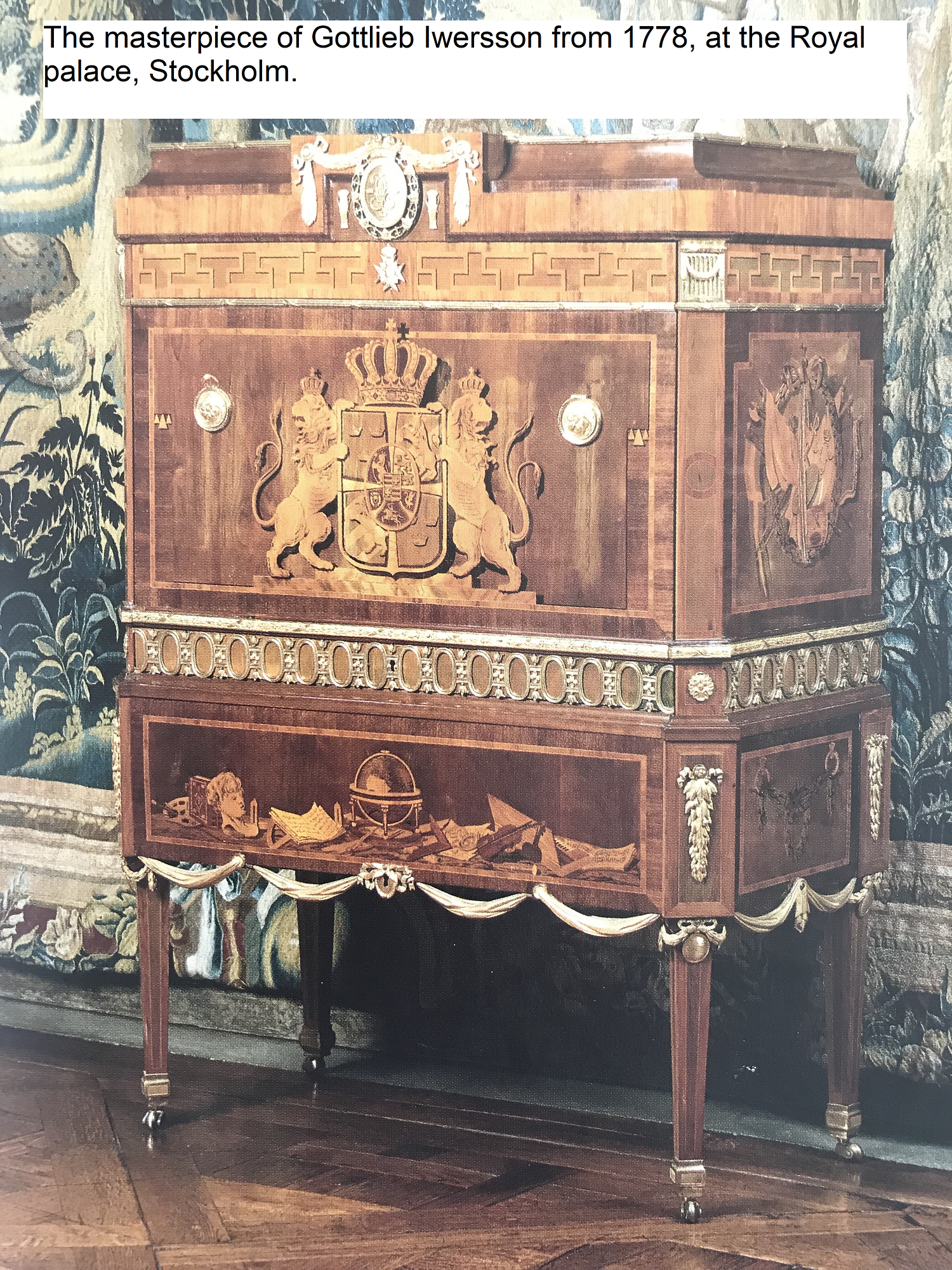A Gustavian 1780's commode by Gottlieb Iwersson, Royal cabinetmaker (master in Stockholm 1778-1813), not signed.
Veneered with birch, mahogany, ebony, maple and colored hardwood. Mounts of gilt brass. Top of gray limestone. One top drawer. Two drawers behind door. The front with inlays of Roman head in medallion. Flanking sitting figures. Length 64, width 48, height 79 cm. Key included.
The stone top eith repair, veneer repairs, the sides knob-mounts later. Keys included.
Literature
Ernst Fischer, Kongl. slottssnickaren och schatullmakaren Gottlieb Iwersson, Röhsska konstslöjdmuseet, Göteborg 1916.
Torsten Sylvén, Mästarnas möbler, Värnamo 1996.
More information
The commode model is of the French design which Georg Haupt introduced in Sweden in the 1770s, where the straight Gustavian neo-classical design was combined with the Rococo's elegant slightly curved legs. The model became very popular why even Gottlieb Iwersson, like several other Gustavian masters, gave this form to their commodes. Even the solution to have a door in front of the drawers is French. This design was chosen so that the division of drawers would not interfere with the intarsia motif of the façade.
The lot has a pair of intarsia figures with drapery fabrics next to the medallion which are rare and and the source of inspiration for them is probably a commode by Georg Haupt from 1779, which today is in the Victorian & Albert Museum in London.
The large twisted gilt brass leaf rosette on the apron can be found on several of Iwersson's more magnificent Gustavian commodes and tables. Although the mount was used by Georg Haup, it can be said to be a hallmark of Gottlieb Iwersson.
Beside Georg Haupt, Gottlieb Iwersson created the most exclusive Gustavian furniture. With the guidance of signed and dated furniture by Gottlieb Iwersson, the lot can be dated to the 1780s. During the first half of the 1780s, he made preferably richly ornated furniture with gilded mounts and intarsia with figurative medallions. Georg Haupt himself described figure medallions as "inlay medallion with head à l’antique" in an account to Princess Hedvig Elisabeth Charlotta in 1777.
Gottlieb Iwersson was born in Malmö in 1750. He was the second son of Olof Iwersson, the Director in Malmö carpentry guild. His older brother Johannes eventually became master in Malmö. Gottlieb tried to become a master in 1774 in Malmö, but the guild did not accept more masters. Iwersson moved insted to Stockholm and became a journeyman at Nils Dahlin, who also came from Skåne in 1775. Impatient to become a master, Gottlieb Iwersson turned 1778 directly to the Swedish king Gustav III with a drawing of a secretary. The king accepted this and the carpentry guild did not consider themselves able to go against the king's will. In the same year he became a master and a master at the Court. The masterpiece is situated at Royal Palace in Stockholm







































































